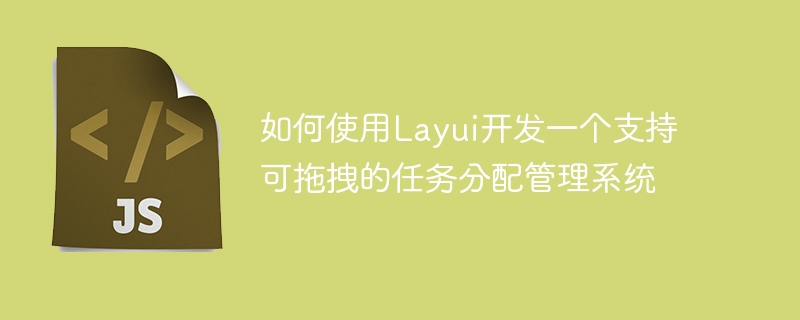

Title: Using Layui to develop a drag-and-drop task allocation management system
Introduction:
With the increase in the number and complexity of tasks, a Efficient task allocation management systems have become increasingly important. This article will introduce how to use the Layui framework to develop a task allocation management system that supports drag-and-drop, and provide specific code examples.
1. Introduction to Layui
Layui is a lightweight modular front-end framework. It has rich components and simple and easy-to-use APIs, and is suitable for quickly building various front-end applications. In the development of this system, we will use the Drag module in Layui to implement the drag and drop function of tasks.
2. System function design
3. System development steps
4. Code Example
The following is a simple front-end code example to show the basic drag and drop function implementation:
<!--HTML代码-->
<div id="task1" class="taskCard" lay-drag="taskMove">任务1</div>
<div id="task2" class="taskCard" lay-drag="taskMove">任务2</div>
<div id="task3" class="taskCard" lay-drag="taskMove">任务3</div>
<!--JavaScript代码-->
layui.use('element', function(){
var element = layui.element;
//拖拽回调
element.on('taskMove(demo)', function(data){
console.log(data.elem) //当前被拖拽的任务
console.log(data.event) //拖拽时的事件类型
console.log(data.start) //开始拖拽时的位置信息
console.log(data.end) //结束拖拽时的位置信息
});
});The above code shows how to use Layui Drag module to implement the drag and drop function of tasks. Set lay-drag="taskMove" on the task card to make it draggable. When a drag action occurs, the relevant information of the task can be obtained through the callback function to further update the task status.
Conclusion:
This article introduces how to use the Layui framework to develop a task allocation management system that supports drag-and-drop. Through Layui's Drag module, we can easily implement the drag-and-drop function of tasks and improve the efficiency of task management. Through the sample code in this article, readers can quickly master the use of Layui and apply it to actual projects. Hope this article is helpful to readers.
The above is the detailed content of How to use Layui to develop a drag-and-drop task allocation management system. For more information, please follow other related articles on the PHP Chinese website!